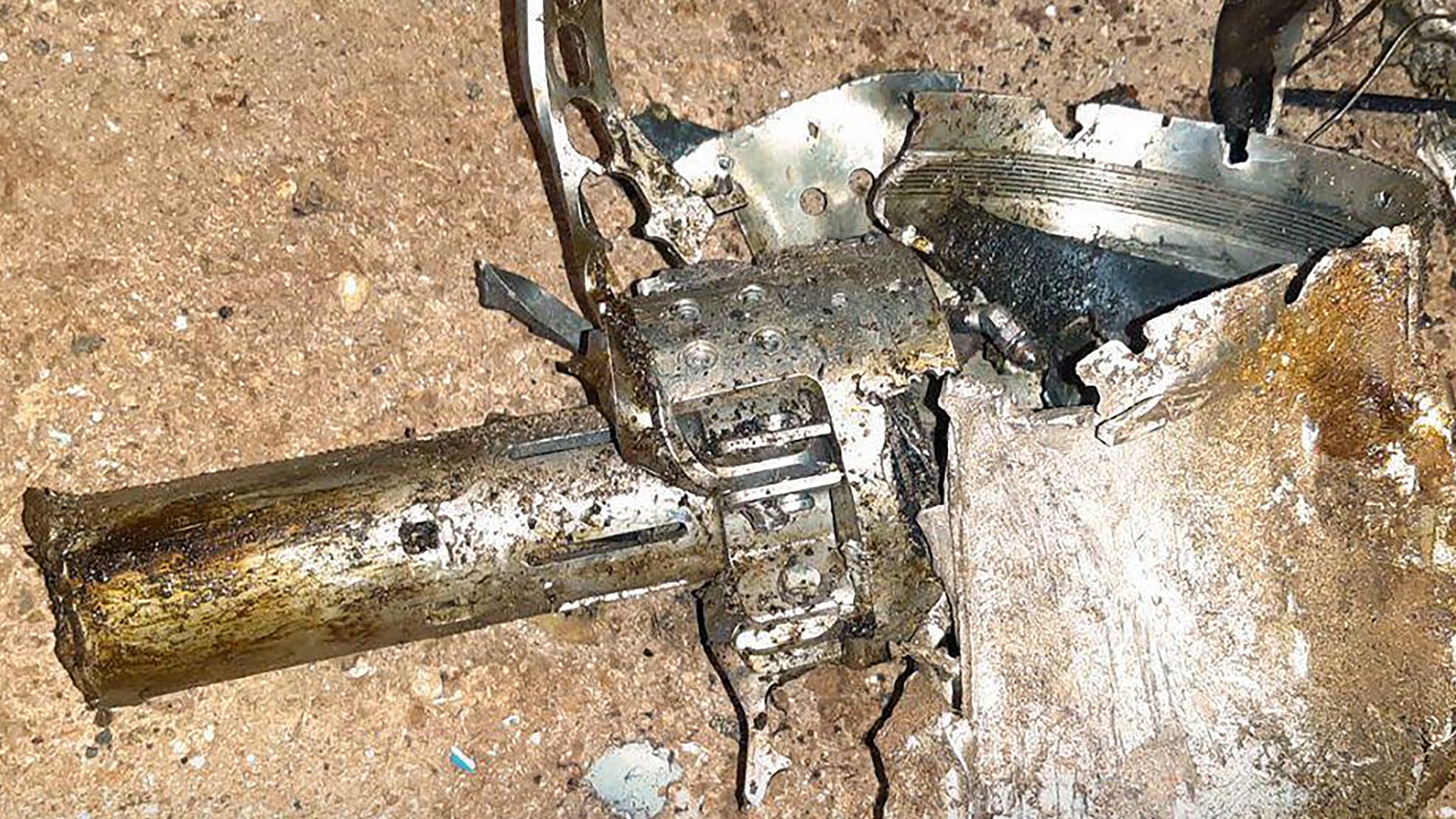After the most recent known use of the AGM-114R9X Hellfire missile, a weapon that uses blades instead of explosives to kill its target with minimal collateral damage, literally smashing and slicing through them, evidence of exactly how the bizarre weapon works has come to light. Imagery from the scene of the attack, located less than 10 miles from where Abu Bakr al-Baghdadi was killed in Syria, shows what appears to be the core of the weapon and its deadly appendages. It appears to be a gruesome, but stunningly effective device.
The image, seen at the top of this story, shows a thick central hub structure that would act as a penetrator with six swing-out skeletonized blades. Basically, anything in the radius of the blades would die.
The standard AGM-114 flies at roughly 1,000 miles per hour. It isn’t clear if this version of the weapon hits those speeds, but there is no indication otherwise. It’s unclear when exactly the blades deploy during use, but it is likely that they extend out from the missile via fairings that pop-off shortly before its flight ends or swing-out through slots in the missile’s body. A fuze system or direct inertia system could deploy them once the missile makes contact with a surface, as well.
The Hellfire is just over five feet long, with its warhead section taking up the central area of the missile’s tube-like body. You can see how this payload would slot into where the explosive warhead would otherwise go in the image below:

The payload area is roughly a foot and a half long and let’s say the swords are roughly the same length, this would provide about a three and a half foot diameter kill zone, which is similar to what we see in the images of the vehicles that have been struck. It is the ultimate precision air-to-ground weapon—surgical both in metaphor and application.
It would be highly interesting to see how this almost comic-book-like adaptation of the AGM-114 came to be. We definitely know there are places where these types of payloads are tested and the need for such a weapon obvious, but how such melding of old and new weaponry came to be would be fascinating to understand. In fact, I am just as interested in all the pitches that didn’t get selected considering how wild the one that did is.
The image at least verifies how many of us thought this system would work and fits with the few non-attributed descriptions of its general concept of operations.
Special thanks to Bellingcat’s Nick Waters who alerted us to this image after Twitter user @obretix came across it.
Contact the author: Tyler@thedrive.com
